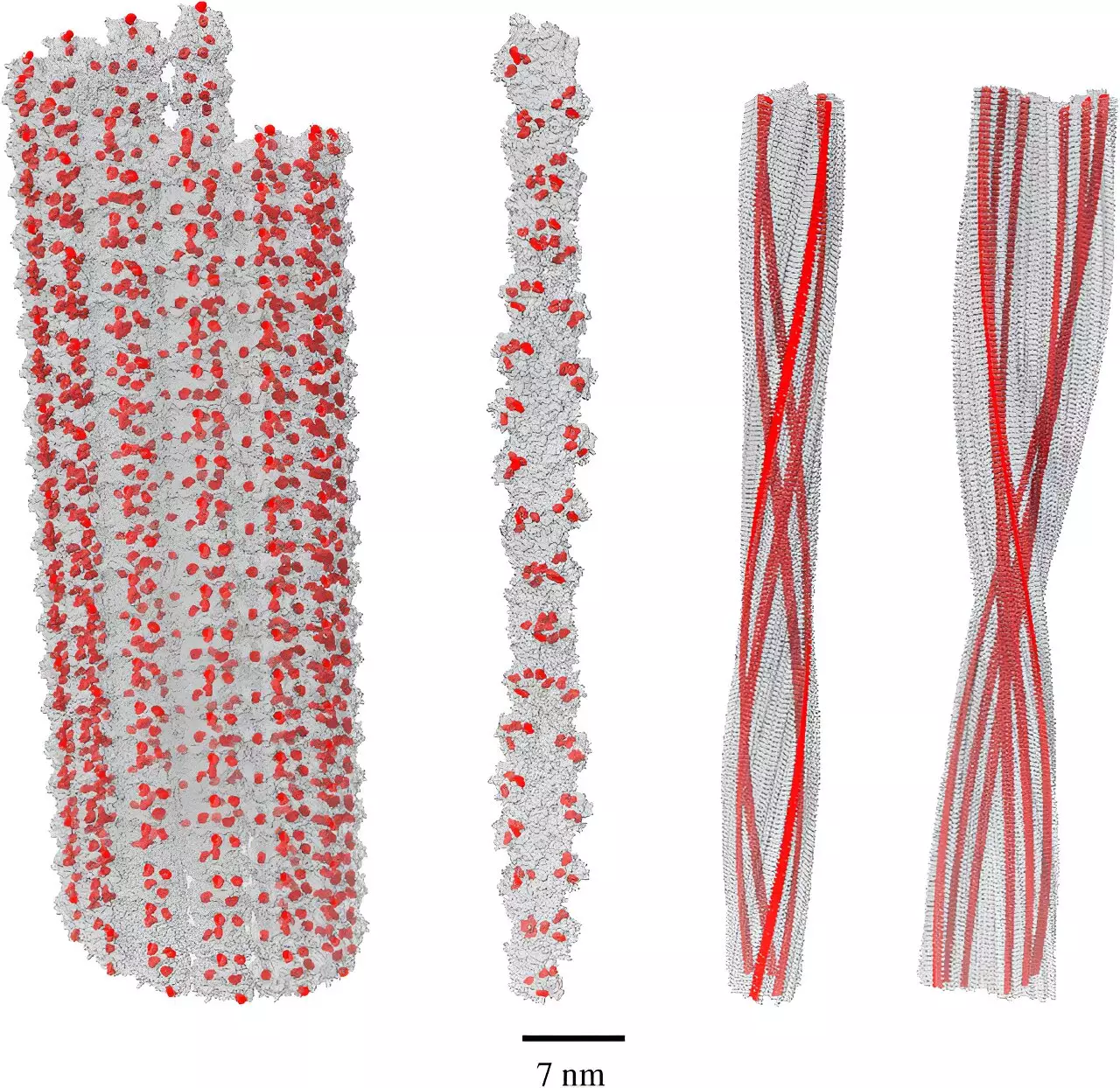The realm of Alzheimer’s research stands on the brink of transformation, particularly with emerging insights that scrutinize established beliefs surrounding this complex disease. Traditionally, amyloid fibrils—protein structures found in the brains of individuals with Alzheimer’s—have been considered the culprits behind cognitive decline and neurodegeneration. However, new discoveries suggest that these structures could play a markedly different role, potentially as adaptive mechanisms in response to cellular stressors. The implication that amyloid may not be the villain we thought raises critical questions about treatment strategies and our understanding of the disease’s biology.
Amyloid fibrils have long been synonymous with Alzheimer’s disease, leading to a plethora of treatment strategies targeted at their reduction and prevention. These include a variety of pharmacological approaches attempting to lower amyloid levels or inhibit their formation. Yet, discrepancies arise in the clinical data; many individuals exhibit significant amyloid deposits without developing dementia, indicating that the mere presence of these structures is not definitive of the disease’s progression.
This paradox initiates a reevaluation of the amyloid hypothesis. It prompts researchers to consider a broader scope of biological processes occurring in the context of neurodevelopment and degeneration. Are amyloids merely byproducts of neurodegeneration, or could they signify a protective reaction of the brain in response to persistent oxidative stress? This inquiry is particularly pertinent in light of recent studies shedding light on the biochemical landscapes in which amyloids reside.
Central to this recalibrated understanding of amyloid structures is a phenomenon known as single-photon superradiance. This quantum effect involves the ability of a collection of molecules, under certain conditions, to efficiently absorb and re-emit high-energy light, offering potential protective benefits against oxidative stress. Research led by Dr. Philip Kurian at Howard University highlights how this effect can be harnessed in networks of the amino acid tryptophan, which are densely packed in amyloid fibrils.
The discovery that amyloid fibrils can exhibit superradiant behavior suggests they possess an unrecognized capacity to manage the damaging high-energy UV photons emitted by free radicals. This insight transforms the narrative around amyloids from that of harmful entities to potential guardians of neuronal health, capable of mitigating oxidative damage. The implications of this finding are monumental, as they not only modify concepts surrounding Alzheimer’s pathology but also inspire innovative therapeutic pathways.
The ramifications of this research on Alzheimer’s treatment strategies could be profound. If amyloid fibrils serve as protective agents rather than adversaries, current methods focused on their eradication might require substantial revision. Rather than targeting amyloids for removal, future therapeutic protocols might explore ways to enhance their protective capabilities, thus fostering a neuroprotective environment rather than dismantling it.
Dr. Kurian’s assertion that amyloid aggregation could be an adaptive response instead of a pathological one aligns with an emerging trend in biomedicine that emphasizes resilience and adaptation in biological systems. This shift could encourage a more nuanced approach to neurodegenerative disorders, emphasizing the need to support and bolster the brain’s innate mechanisms for self-preservation.
As research progresses, the next critical challenge will be experimentally validating the potential role of amyloid in oxidative stress mitigation. Dr. Kurian advocates for a multidisciplinary perspective, urging fellow scientists in biology and neuroscience to integrate quantum phenomena into their research frameworks. Such an approach fosters collaboration across fields and cultivates a deeper understanding of life’s intricate systems.
Emerging scholars, like Hamza Patwa from Kurian’s lab, are already paving the way for this integrative methodology. Patwa emphasizes that true scientific inquiry transcends conventional disciplinary boundaries, fostering innovation and broader comprehension of complex biological environments.
The intersection of quantum biology and Alzheimer’s research heralds a new era of understanding this debilitating disease. As we reevaluate the roles of amyloid fibrils through the lens of quantum phenomena, we might not only redefine treatment paradigms but also enrich our comprehension of the brain’s resilience in the face of adversity. This evolving narrative underscores the importance of open-mindedness in scientific exploration, advocating for a holistic view of life’s complexities. The road ahead promises to be daunting yet exciting, as we venture into uncharted territory that could ultimately unlock new modalities for ameliorating Alzheimer’s disease.

